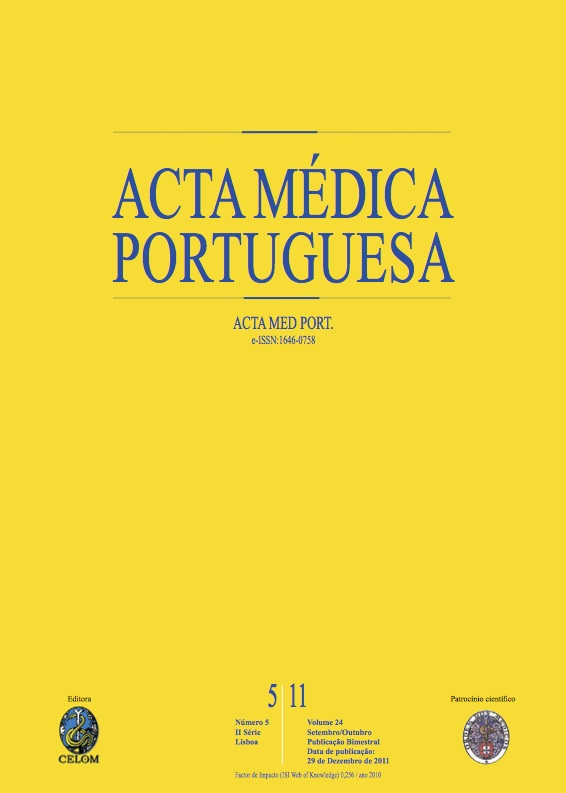Abdominal aortic aneurysm: an uncommon presentation.
DOI:
https://doi.org/10.20344/amp.496Abstract
Most abdominal aortic aneurysms are asymptomatic, being accidentally found on physical examination or in routinely performed imaging studies. They only require surveillance (which is variable according to the aneurism size) and medical therapy in order to achieve risk factor reduction. However, in certain situations, according to the risk of aneurism rupture, elective surgery or endovascular procedure may be necessary. About 80% of the cases of aneurism rupture occur into the retroperitoneal space, with a high mortality rate. There are uncommon presentations of aneurism rupture as the aorto-caval fistula, which also require fast diagnosis and intervention. The authors present the case of a 71-year-old man, with the previous diagnosis of hypertension, acute myocardial infarction 2 months earlier (undergone primary Percutaneous Coronary Intervention) and tabagism, who was admitted at the emergency department with intense 24-hour-evolution epigastric pain. On physical examination, the Blood Pressure values measured at the lower limbs were about half the ones measured at the upper limbs and there was an abdominal pulsatile mass, with a high-intensity murmur. As the authors suspected aortic dissection, aneurysm, coarctation or thrombosis, it was done a Computed Tomography scanning with intravenous contrast, which revealed a ruptured abdominal aorta aneurysm with a mural thrombus. The doppler ultrasound confirmed the presence of a high debit aorto-caval fistula. The patient was immediately transferred to the Vascular Surgery. However he died 2 hours later, during surgery.Downloads
Downloads
How to Cite
Issue
Section
License
All the articles published in the AMP are open access and comply with the requirements of funding agencies or academic institutions. The AMP is governed by the terms of the Creative Commons ‘Attribution – Non-Commercial Use - (CC-BY-NC)’ license, regarding the use by third parties.
It is the author’s responsibility to obtain approval for the reproduction of figures, tables, etc. from other publications.
Upon acceptance of an article for publication, the authors will be asked to complete the ICMJE “Copyright Liability and Copyright Sharing Statement “(http://www.actamedicaportuguesa.com/info/AMP-NormasPublicacao.pdf) and the “Declaration of Potential Conflicts of Interest” (http:// www.icmje.org/conflicts-of-interest). An e-mail will be sent to the corresponding author to acknowledge receipt of the manuscript.
After publication, the authors are authorised to make their articles available in repositories of their institutions of origin, as long as they always mention where they were published and according to the Creative Commons license.









